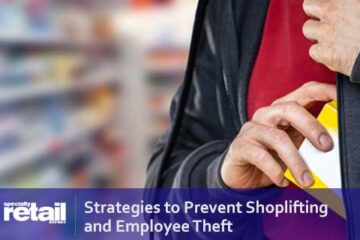You’re a specialty retailer, or about to be. What are you going to sell? Making that decision—choosing a product—depends on several factors: your business goals, your location, even your interests. Start with your business goal:
- make fast money with trendy or “hot” products
- make extra money during the holiday season
- build a thriving, long-term business
- a combination of these
Another important factor: “the right product in the right place.” Your location and product(s) have to be well matched. A product that’s great in one location isn’t necessarily great in another. What you want is a product that appeals to many buyers in that location… or a location that brings the largest number of buyers for that product. Here are other key factors to take into account:
Sell what you love
Are you a collector, an artist, a golfer? Do you love to paint or sew or fish? Thousands of specialty retailers started successful businesses based on their interests and talents. When you sell something you love, your enthusiasm is contagious: customers “catch” it, making them likelier to buy. So if you’re a cook, an NBA fan, a collector (dolls, stamps, whatever), a movie buff—the list goes on—you might enjoy selling related products. Ask yourself: What do I really like doing? What skills or expertise do I have? What products do I like to use? What product solved a problem for me? Would I enjoy selling products related to any of my Yes answers? If that’s another Yes, you’re on your way.
Established and popular
But if you can’t come up with ideas based on your interests, or prefer not to, look for a product that’s already popular. Specialty retailers generally sell unusual products with high curb appeal, merchandise designed to grab shoppers’ attention and give them a reason to buy. Popular products fall into these categories:
- Impulse
- Personalized
- Trendy
- Collectible
- Licensed
- Seasonal or holiday
- Demonstration
- Handcrafted
Sometimes categories overlap: for example, Christmas impulse items that are personalized. The more categories you can incorporate, the better, as long as you don’t lose your focus.
Impulse
“Impulse” is a multi-billion-dollar market. Whether year-round or seasonal, impulse items are designed to spark spontaneous purchase. They include cosmetics, candles, T-shirts, bath-&-body, jewelry, watches, candy, hats, accessories, books, calendars, ties, mugs, sunglasses, sports-related, toys, frames, and an endless variety of home-décor and holiday products. And most are priced under $20. Some retailers sell nothing but impulse items, rotating or switching merchandise lines as new products replace or complement older ones.
Personalized
If there’s room for a name, you can personalize anything. Personalization products come in two formats: pre-personalized, and personalized on site by hand or computer. Personalizing by hand requires little more than a permanent marker and a steady hand. For computer-personalizing, including laser-engraving, the equipment is dictated by the finished items: T-shirts and mugs both require computers, but different equipment.
Personalized products appeal to all kinds of shoppers for two reasons: people like seeing their names on things; and they can’t get this service from larger retailers except on certain merchandise. Personalizing on the spot does particularly well. If you get into it, be sure the products can be personalized easily and quickly. Customers want fast results: the longer they have to wait, the less likely they’ll stay long enough to buy. Strong sellers: holiday (especially ornaments and stockings); items for babies and children (frames, dishes, magnets and much more); and items based on occupations, interests and sports.
Other computer-assisted personalization: photo images (T-shirts, mugs, mouse pads, etc.); genealogy—family trees, coats of arms, surname histories (framed, or on plaques, mugs, etc.); and celebration mementos for birthdays, weddings, new babies, and other life events.
Trend
Trend products can be lucrative, but the market is subject to the ever-changing dictates of fashion and customer taste. Trends are either short-term (fads) or long-term, and can be geographic, demographic or both. To sell trend merchandise, you have to be a trend-watcher, paying constant attention to the latest movies, TV, fashion, celebs, sports, décor, etc., to find out what pop culture is up to at the moment—and willing to pay for.
Long-term Here’s a good example: baby boomers. They buy products that make them look good, feel good, and improve their health and longevity, making diet and nutrition products a $50 billion industry. And they’re not going to stop. If you do sell long-term trend merchandise, check out American Demographics magazine (demographics.com).
Short-term Some products are designed for a quick in-and-out, like movie tie-ins. Games and toys can also fall into this category—think Beanie Babies, Furbies, scooters, as well as themes and brands (Barbie, Hello Kitty). Popular, strong-selling categories: remote-control and interactive toys, fleece, denim, slippers, designer-look purses, spiritual/New Age, garden, weight-loss, music, electronics, and home décor. A word of caution: Be aware that trends cool off fast. Watch your sales for any hint of a downturn, and have your next quick-hit product lined up.
Collectibles
Nearly everyone collects something these days, which is why collectibles generate sales of around $8 billion a year. Popular collectibles lines include action figures, die-cast models (cars, planes, other to-scale miniatures), memorabilia, plush, toys, art, posters, trading cards, handcrafts, figurines, Christmas, coins/stamps, and logo products (e.g., Harley-Davidson, Coca-Cola). Collectibles offer virtually unlimited product lines but require in-depth product knowledge to sell them successfully. To become and stay familiar with your collectibles market, subscribe to consumer magazines on the topic, as well as trade publications for collectibles retailers (start with collectorsinfo.com).
Licensed
The licensed industry took off in the mid-’70s, when consumers scooped up a reported $2.5 billion worth of Star Wars merchandise. Today, it’s reported to be a $95 billion market with thousands of products licensed by entertainment companies, corporations, sports teams, non-profits, museums, designers and others. Movie, TV and game merchandise make up the largest share of the market. One of the biggest sources is Disney; brand-name products like Coca-Cola are the second best-selling category; sports merchandise (clothing, accessories, and novelty/gift items like mugs, picture frames, paperweights, posters) is third. And the list goes on. But keep in mind that not every licensed product is a blockbuster. (Disney’s Pocahontas, for example, didn’t sell well.) Sometimes the licensing company will help new retailers with matters like visual merchandising, pricing and selling. Some companies even have complete business packages.
Holiday and seasonal
Holiday retailing can be profitable because you can get in and get out quickly, and take advantage of peak buying periods without the downtimes that year-round retailers grapple with. Holiday merchandise isn’t limited to year-end. Many specialty retailers have successful businesses that cater to nearly every holiday on the calendar. To find out about some you might not even know exist, check out greeting-card Web sites such as hallmark.com or emountain.com.
Christmas-only retailers, the biggest group of seasonal retailers, generally open November 1st and close December 31st. Approximately a third of them sell only Christmas merchandise; the other two-thirds sell general gifts or “stocking-stuffers” that don’t necessarily have a Christmas theme but are in demand at that time. Other seasonal retailers focus on the seasons of the year. Some operate year-round, rotating or switching products as the seasons change; others operate only during the seasons that relate to their product lines (e.g., beach accessories in the summer).
Demonstration
Some of the highest-grossing concepts are products that are demonstrated in front of customers. “Demo” engages their interest and invites them to interact with the product. The more they interact, the greater the chance of making a sale. Popular demonstration products include food-prep (choppers, grills, juicers), cosmetics, hair accessories, nail-care, toys/games, stress-relief, herbal, and personalization products. To succeed with demo products, you need a good “script” and people who are outgoing and friendly, and know the product inside out.
Handcrafted
Thousands of talented artisans spend most of every year creating handcrafted products… and making big money in November and December with a holiday cart or kiosk. These products have great appeal because they’re unique, there are usually few competitors, and they attract and win impulse buyers. The tricky part is pricing, because it’s based on customers’ value perceptions. So if you plan to sell handcrafted merchandise, it’s crucial to know your target customer.
Before you sign a lease, make sure you have enough inventory to carry you to the end of the buying season or year if sales are strong. Nothing worse than being open for the holiday buying season, and selling out by December 5th!
How much to buy?
How much product you need for opening day depends on your location—cart, kiosk, in-line store, festival space, etc. In some cases, the nature of your product may suggest or even dictate the type of location you need. For a demonstration product, where attention to the product means sales, a cart in the path of shopper traffic in a large mall might be better than a spacious in-line in the same mall. Or the size of your product might define the type of location. Selling oversized teddy bears from a cart can be problematic, no matter how cute they are, because of space and the display limitations.
While there’s no magic formula to pinpoint how many items you need, the available selling space usually dictates how much to start with. A cart requires the least amount of inventory because at 100-150 s/f, it’s the smallest and most compact. On average, cart-based retailers spend $3,000-$8,000 (wholesale) for start-up inventory. A kiosk is larger (150-250 s/f); start-up inventory typically costs $4,000-$10,000 (wholesale) to fill it. And an in-line store, whether 500 s/f or 5,000 s/f, takes a significantly larger investment, often $50,000 or more.
The trick is educated guessing. Your goal is to determine a reasonable level of inventory, not an exact number of products. Try figuring it this way: “How many widgets can I attractively display on 2’x4? shelf?” That answer multiplied by the number of shelves you have gives you as good an estimate as any. For in-line stores, it helps to block off areas of the store according to product category. This way, you can calculate the space needed for various lines one at a time.
Cart and kiosk-based retailers sometimes use inexpensive materials like foam blocks or cardboard to simulate products and set up a mock display. Some leasing managers even allow you to come in and “borrow” a cart or kiosk for a day to test how products might fit.
Once you sign on, most leasing managers are happy to help first-timers get a handle on inventory from the start if you ask them. They can also help you avoid overbuying by giving you information such as start-up inventory averages and sales figures for that venue. And some malls have visual merchandising pros (at low rates or sometimes free) who can help you determine a “reasonable” amount of start-up inventory.
Don’t overlook your suppliers. Most of them can help you figure how much start-up inventory you need. Some companies offer set start-up packages, and many include display props. One caution, though: Remember that their goal is to sell as much product possible, so keep your location sketch handy and stick to your space allocations (and your budget!) as much as you can. Also ask existing specialty retailers for help. They’ve been through it and are often willing to give newcomers their invaluable advice.
Mining for more
Need more ideas? You have a host of resources to turn to: trade magazines, directories, online resources, trade shows and merchandise marts. And finally, remember that good ideas can come from anywhere. Keep your mind and eyes open to the possibilities and, who knows: you may end up with more good ideas than you’ll know what to do with.


